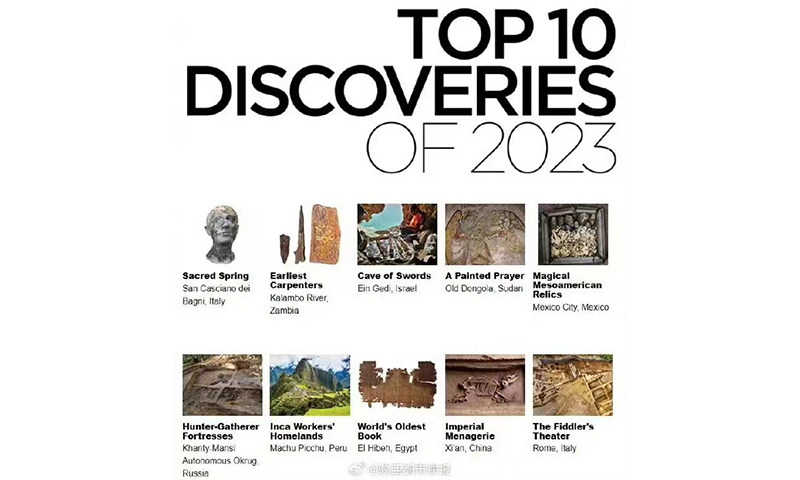Earliest multiplication tables discovered in ancient tomb
History of formulas pushed back by nearly 100 years
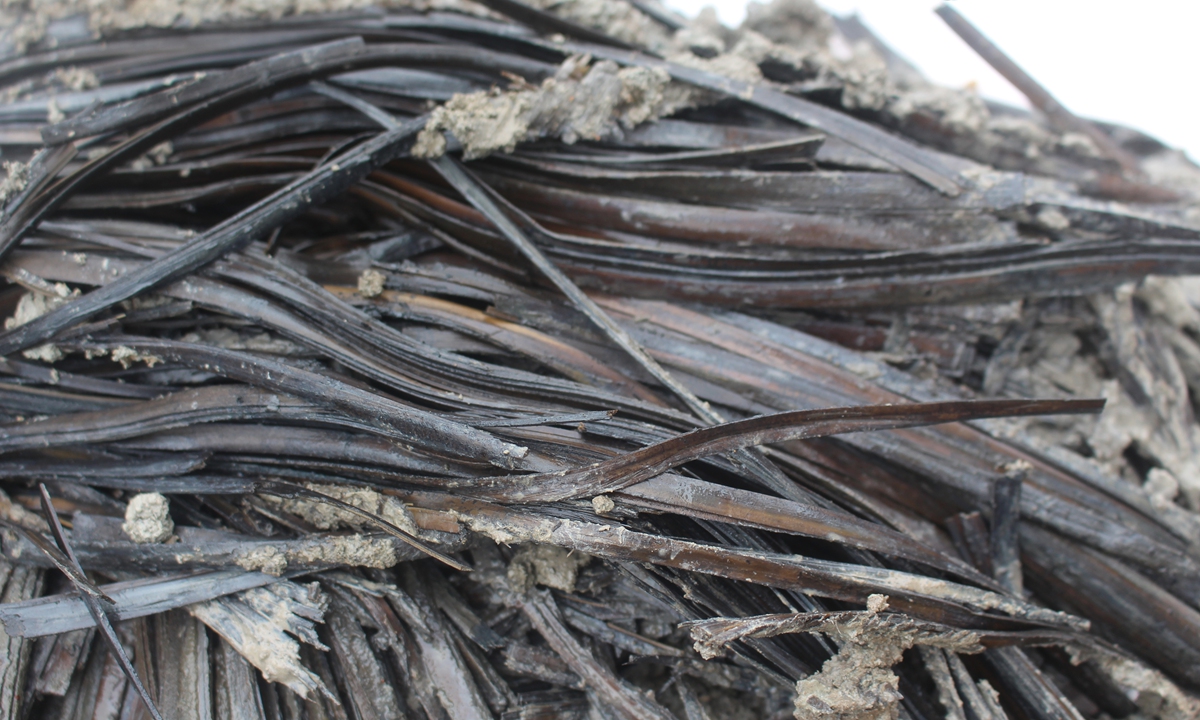
Bamboo scripts from the Warring States period (475BC-221BC) unearthed from the M1093 tomb at the Qinjiazui site in Jingzhou city, Hubei Province Photo: Courtesy of China's National Cultural Heritage Administration
The earliest multiplication formulas on record have been discovered on bamboo slips from the Warring States period (475BC-221BC) at a tomb site in Central China's Hubei Province, pushing the history of these formulas back by nearly a century, China's National Cultural Heritage Administration (NCHA) announced on Thursday at a press conference.
Yang Kaiyong, a research fellow at the Jingzhou Museum, said at the press conference that the M1093 tomb at the Qinjiazui site in Jingzhou city, Hubei Province, had the highest number of bamboo slips from the Chu state in the Warring States Period and the greatest amount of texts among known tombs for individuals, making it a significant discovery in Hubei Province and the whole country.
Currently, 3,910 slips have been cataloged, and an estimated 1,200 to 1,500 slips are expected to be assembled, containing around 30,000 characters.
One highlight discovery is the earliest physical record of the multiplication table Jiujiushu, pushing back its historical identification by nearly a century, said Yang.
The contents of the bamboo slips from the tomb are diverse, covering mathematics, medicine, animal husbandry, literature, and more. This discovery provides valuable new material for researching the history, culture, and thought of the pre-Qin period.
"Archaeologists will proceed with tasks such as infrared scanning, interpretation, assembly, research, dehydration protection, and exhibition of these artifacts," Yang told the Global Times on Thursday.
Another important site mentioned is the Xiazhan site in Baoji city, Northwest China's Shaanxi Province, the most explicitly identified, longest-lasting, and well-preserved national sacrificial site from the Qin and Han periods (221BC-AD220).
Yang Kaiyong, a research fellow at the Jingzhou Museum, said at the press conference that the M1093 tomb at the Qinjiazui site in Jingzhou city, Hubei Province, had the highest number of bamboo slips from the Chu state in the Warring States Period and the greatest amount of texts among known tombs for individuals, making it a significant discovery in Hubei Province and the whole country.
Currently, 3,910 slips have been cataloged, and an estimated 1,200 to 1,500 slips are expected to be assembled, containing around 30,000 characters.
One highlight discovery is the earliest physical record of the multiplication table Jiujiushu, pushing back its historical identification by nearly a century, said Yang.
The contents of the bamboo slips from the tomb are diverse, covering mathematics, medicine, animal husbandry, literature, and more. This discovery provides valuable new material for researching the history, culture, and thought of the pre-Qin period.
"Archaeologists will proceed with tasks such as infrared scanning, interpretation, assembly, research, dehydration protection, and exhibition of these artifacts," Yang told the Global Times on Thursday.
Another important site mentioned is the Xiazhan site in Baoji city, Northwest China's Shaanxi Province, the most explicitly identified, longest-lasting, and well-preserved national sacrificial site from the Qin and Han periods (221BC-AD220).
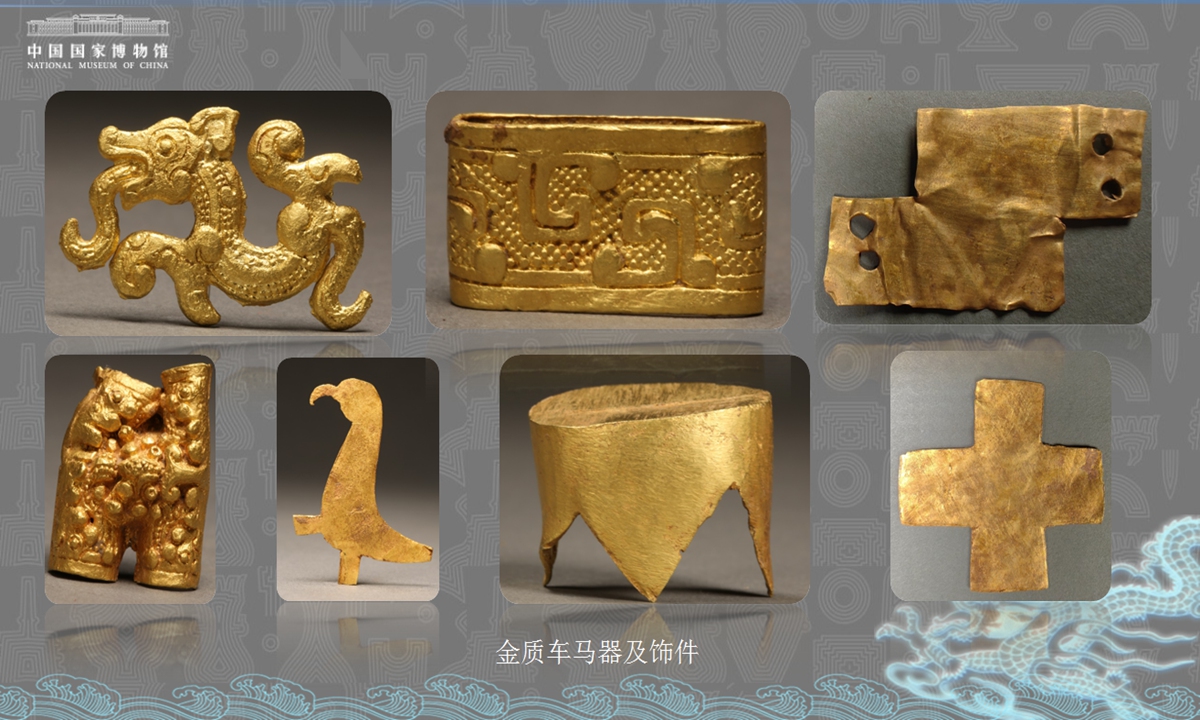
Relics unearthed from the Xiazhan site in Baoji city, Northwest China's Shaanxi Province Photo: Courtesy of China's National Cultural Heritage Administration
You Fuxiang, a research fellow at the National Museum of China, said at the conference that a joint archaeological team from different archaeological organizations has conducted three excavations, uncovering an area of 2,400 square meters since 2020.
The Xiazhan site has produced over 1,409 various sacrificial pits, with artifacts dating from the Warring States Period to the Western Han period (206BC-AD25), mainly found in the house and pits.
There are a variety of sacrificial items, such as gold, jade, and bronze chariots and horses from the Spring and Autumn Period (770BC-476BC), as well as jade figurines and large quantities of bronze chariots, and coins.
You told the Global Times on Thursday that the next step involves continuous excavation to establish a complete chronological timeline for the national sacrificial remains from the Spring and Autumn Period to the late Western Han Dynasty, clarifying the structure and functional components of the densely packed site, and revealing the details of the sacrificial rituals held during the Qin and Han dynasties.
Additionally, the Beicheng Village Cemetery in Shaanxi Province's Xixian New Area, reported in this briefing, is the largest independent cemetery discovered to date, dating from the Sixteen Kingdoms period (304-439) to the Sui and Tang periods (581-907).
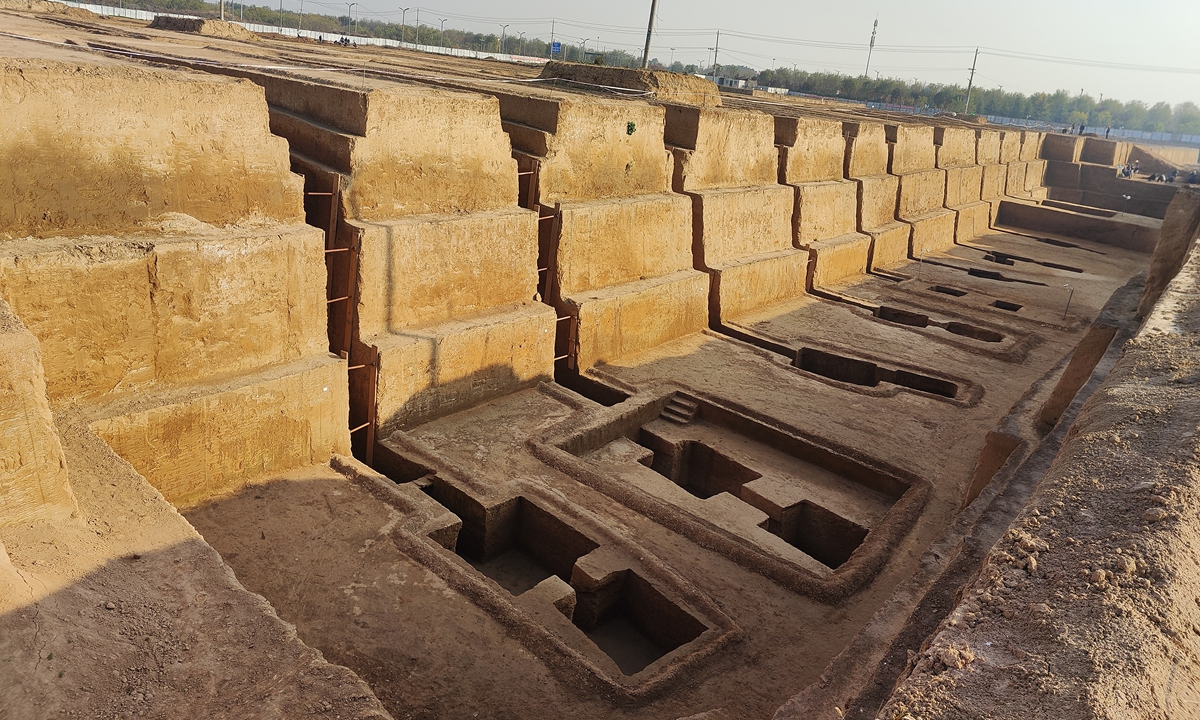
Beicheng village cemetery in Shaanxi Province Photo: Courtesy of China's National Cultural Heritage Administration
The layout of the entire cemetery is clear and orderly. In use for a vast extended period of time, it vividly depicts the gradual integration of minority ethnic groups migrating to the current middle area of Shaanxi Province with Han culture during the Sixteen Kingdoms to the Sui and Tang periods, according to a press release issued by NCHA on Thursday.Another site in Chenzhou city, Central China's Hunan Province, served as an ancient administrative center. Archaeological findings include nearly 10,000 bamboo slips from the Wu state of the Three Kingdoms period (220-280), covering topics such as administrative divisions, taxation, household registration, farming, and mining. This discovery provides crucial information for studying the ancient central government's development and effective governance in the southern mountainous region, noted the release.
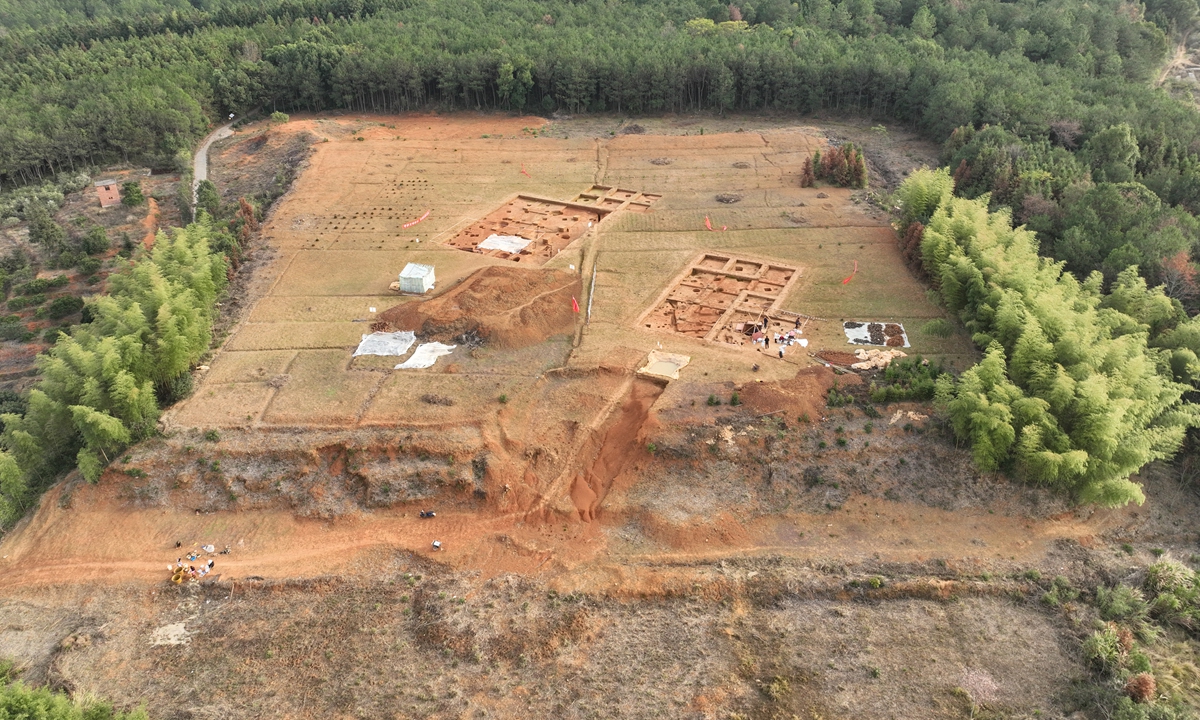
A city site in Chenzhou city, Central China's Hunan Province Photo: Courtesy of China's National Cultural Heritage Administration

